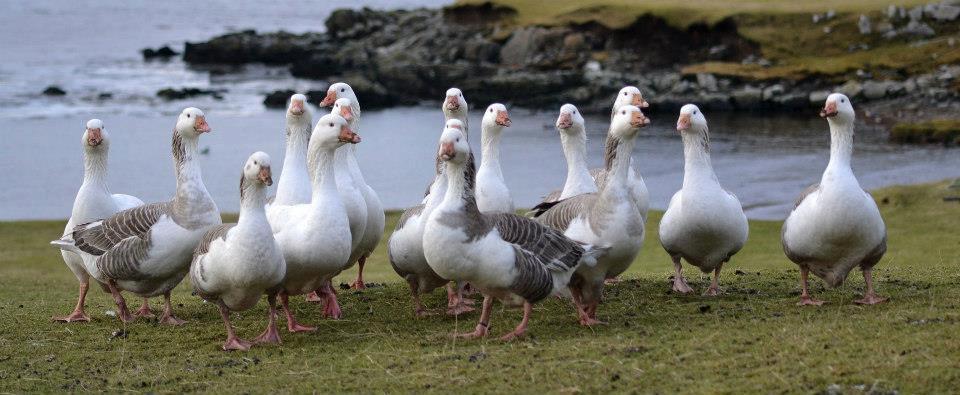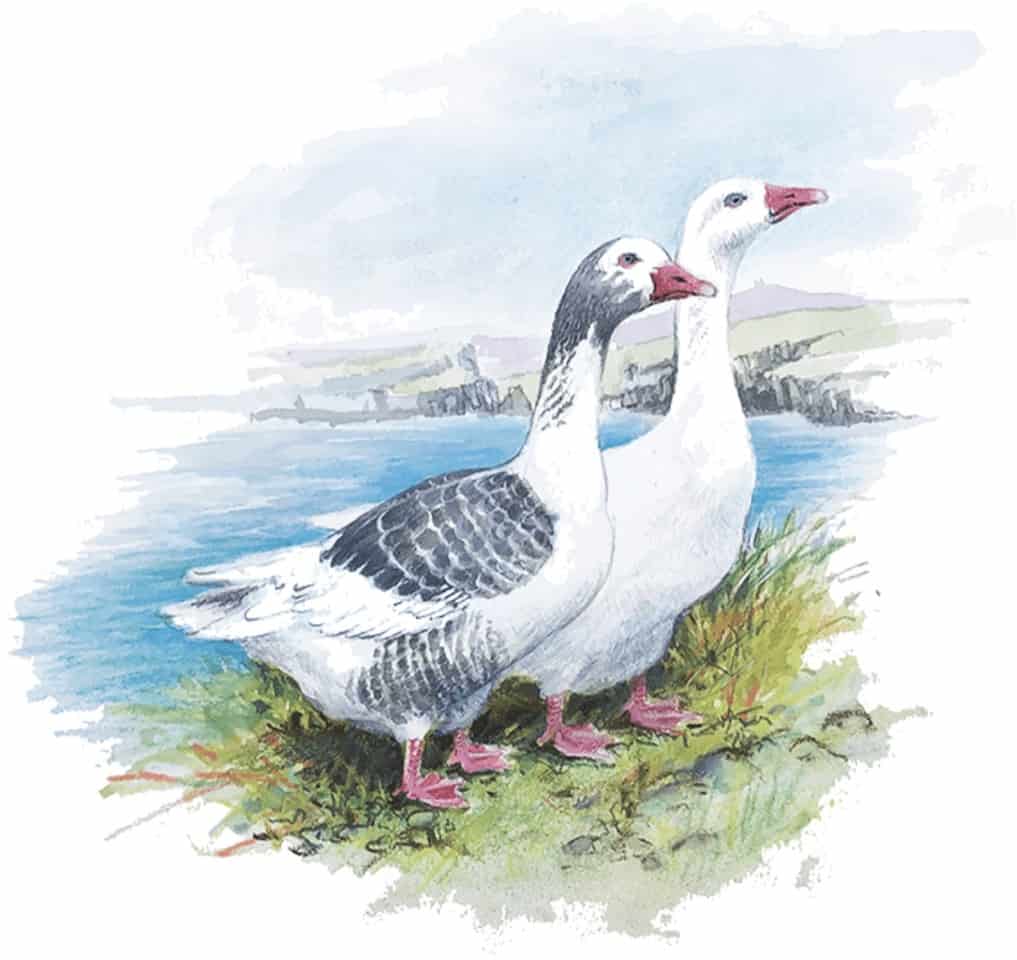Shetland Goose


Shetland Geese are one of four UK domesic breeds and are on the RBST Watchlist.
Light breed
Domesticated Greylag Goose Anser anser
Developed to cope with challenging conditions on the northernmost Isles – Shetland, where the people of the land are more fishermen with crofts, than crofters with boats.
Shetland Geese do well on rough ground and have very few health issues. Slightly smaller than the West of England Goose, the Shetland shares its autosexing characteristics. They are smaller than the big white farmyard types, with the males being mainly white and the females grey and white – so easy to tell the sexes apart. They have gorgeous blue eyes and the adults have pink beaks and legs.
This breed is much quieter than many and although they can hiss and flap, they rarely make contact (unless protecting their young). Once they get to know you they can become quite curious, even friendly, as well as being great at letting you know someone’s coming into the yard!
Shetland Geese will pair for life, and are inseparable with the gander making sure no one else gets to his goose. If one of them dies sometimes you can see the remaining one pining away for a while, but usually they will find another partner.
Shetland Geese are thought to keep levels of fluke down on wet pasture and so are complementary grazers to sheep.
There are more available now than there have been in the past but there is a fine line to tread to get the numbers up and keeping the gene pool wide enough to be sustainable. However, it is important to try, and hopefully one day there will be an established signature genome for this breed, before it is too late and Shetland Geese become a breed of the past.
Shetland Geese will lay around 20 eggs, depending on age, breeding condition and the weather, usually starting in February. The gander can get quite insistent she stays on her nest to brood, but she doesn’t always listen to him! So it is worth considering using the services of a broody duck.
Share this page